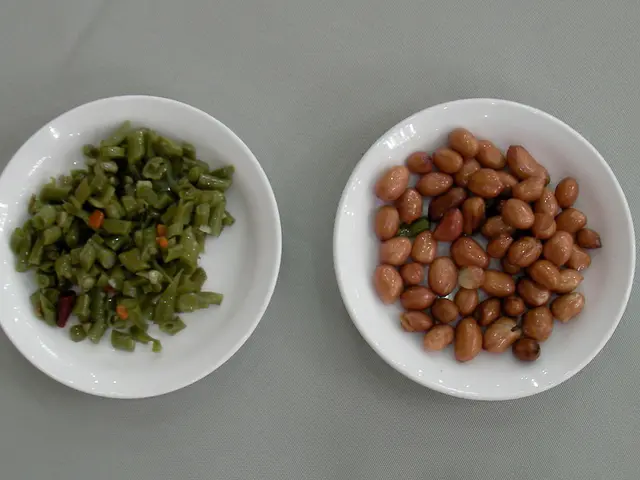Time Control over Speed: The Advantage of Pace Adjustment over Set Quantity
Time Under Tension (TUT) is a fitness principle that has gained popularity among fitness enthusiasts and professionals alike. This approach focuses on controlling movement speed during exercises to optimize muscle growth, strength, and endurance.
The Power of Time Under Tension
By increasing the duration a muscle is actively working during each set, TUT enhances muscle fiber recruitment, metabolic stress, and mechanical tension—all key drivers of hypertrophy and strength adaptation.
Muscle Growth (Hypertrophy)
For muscle growth, an optimal TUT range is generally between 30 to 60 seconds per set. This duration allows muscles to experience enough metabolic stress and blood lactate buildup to stimulate growth effectively. Studies suggest that slower lifting tempos, which extend TUT, boost muscle protein synthesis more than simply increasing the number of repetitions [1].
Strength Development
Regarding strength development, a slightly shorter TUT of about 20 to 40 seconds is more effective. This is achieved by using heavier weights and lower reps, often incorporating slower eccentric (lowering) phases to maximize muscle tension and adaptation [1][2].
Muscular Endurance
For muscular endurance, extending TUT with moderate loads and controlled, slower tempos challenges the muscle's ability to sustain contractions over time, improving fatigue resistance and neuromuscular control [2][4].
Incorporating TUT into Your Workout Routine
To effectively incorporate TUT into your workout routine, consider the following strategies:
- Control Lifting Tempo: Use a controlled cadence such as 3 seconds eccentric (lowering), 1-2 seconds concentric (lifting), and optional pauses. For example, a 3-2 tempo (3 seconds down, 2 seconds up) lengthens TUT and increases muscle activation [2].
- Moderate Weight Selection: Choose weights that allow you to maintain proper form at slower tempos, often moderate loads that do not cause rapid fatigue, enabling sustained tension over the duration of the set [2][5].
- Periodize Your Training: Alternate phases focused on hypertrophy (longer TUT, moderate weights, higher volume) and strength (shorter TUT, heavier weights, lower volume) to optimize gains and reduce injury risk [2].
- Focus on Mind-Muscle Connection: Slow tempos enhance proprioception and control, improving muscle activation and workout quality, which supports hypertrophy [2][3].
- Use Progressive Overload: Gradually increase either the weight or the tempo (slower movement) over time while maintaining or slightly increasing TUT to continually challenge muscles and promote adaptation [5].
By manipulating time under tension, you can create a more effective and controlled workout experience, leading to increased muscle growth, strength, and endurance. Remember, TUT refers to the total amount of time a muscle is under load or contraction during an exercise. Increased time under tension leads to greater hypertrophy, as muscles grow more effectively when they experience prolonged tension.
Slowing down movements, particularly during the eccentric phase (lowering part of the lift), can maximize muscle fiber recruitment, leading to greater muscle growth. Controlling the speed of movements can improve the mind-muscle connection during exercise, as it requires a greater focus on the muscles being worked. Furthermore, controlling the speed of movements minimizes the risk of "cheating" by using momentum or jerky motions, which often occur when the reps are too fast.
In conclusion, embracing Time Under Tension is an effective strategy that enhances physiological stimuli for muscle adaptation while also promoting safer, more controlled movements [1][2][3][5].
- Time Under Tension (TUT) focuses on controlling movement speed during exercises to optimize muscle growth, strength, and endurance, making it a popular approach among fitness enthusiasts and professionals.
- For muscle growth, an optimal TUT range is between 30 to 60 seconds per set, extending the length of active muscle work and stimulating growth through metabolic stress and blood lactate buildup.
- Regarding strength development, a TUT of about 20 to 40 seconds is more effective, achieved by using heavier weights and slower eccentric (lowering) phases to maximize muscle tension and adaptation.
- For muscular endurance, extending TUT with moderate loads and controlled, slower tempos challenges the muscle's ability to sustain contractions over time, improving fatigue resistance and neuromuscular control.
- To effectively incorporate TUT into your workout routine, strategies include controlling lifting tempo, moderating weight selection, periodizing training, focusing on mind-muscle connection, and using progressive overload.
- Embracing Time Under Tension enhances physiological stimuli for muscle adaptation while promoting safer and more controlled movements, reducing the risk of injury during exercise.
- TUT is an integral part of health-and-wellness, fitness-and-exercise, cardio, strength, and endurance training initiatives, contributing to overall fitness science and continuously evolving workouts and training methodologies.







